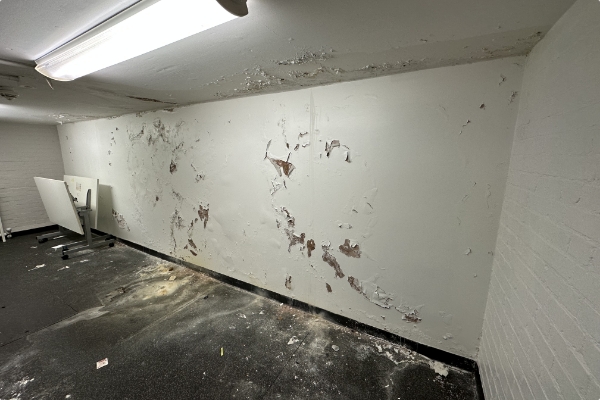Basement Tanking & Waterproofing Explained
Many London homes have a basement; it was definitely fashionable in the early 20th century to build below ground living space and as we can’t build higher, many property owners choose to build underground living space. London has more basements than any other UK city and because this part of the country has a clay base, water can be a serious issue. Water retention is very high in some areas and perhaps building basements is not possible in certain locations.
Cavity Drainage Systems
Cavity drainage systems are a very effective way to control water in a basement; studded wall membrane is fixed to the walls to create a cavity behind the wall and the water drains into channels under the floor and is directed into a sump area, then the water is pumped to designated drainage points. This system is used when regular basement tanking is inadequate, as it is able to deal with water that accumulates in a basement. The best time to install a cavity drainage system is during the build, although a system can be installed at any time; the basement needs to be cleared during the installation.
Main Components of a Cavity Drainage Systems
The main components are as follows:
- Cavity membrane – Special material with studs to keep the membrane away from the wall, creating a cavity that holds water.
- Floor membrane – Raised slightly above the floor, there are channels to hold draining water that comes from behind the wall cavities.
- Sump area and pump – The sump area holds water and that is pumped to designated drainage points.
With the ceilings, walls and floors watertight, the basement remains dry and the system should be periodically inspected.
Basement Tanking
This involves the use of water-resistant cement, which is applied to walls, ceilings and floors to ensure the space is waterproof. At London Damp Specialists, we use Rika products that, when applied, keep water and moisture at bay, and what’s more, when we carry out basement waterproofing in London, we issue a 30-year guarantee.
Various Types of Basements & Cellars
There are numerous types of basements/cellars, which are as follows:
- Daylight basement – Typically located on sloping ground, part of the basement is above ground and there would be a door to the outside.
- Look-out basement – Built on flat land, part of the basement walls are above ground with a few windows to let in natural light and provide ventilation.
- Walk-up basement – There is an exterior entrance and a stairwell, which is very common in London.
- Underground cellar – Typically used to store wine or household items, the entire space in below ground level. Basement waterproofing can ensure that the cellar stays dry, while adequate ventilation is essential.
- Low basement – There is not enough room to stand up; this space is primarily used for storage.
If you would like a professional opinion on the best way to waterproof your below ground living space, call London Damp Specialists on 020 7458 4864 or fill in the form on this website and we will contact you and arrange a visit to your home.
